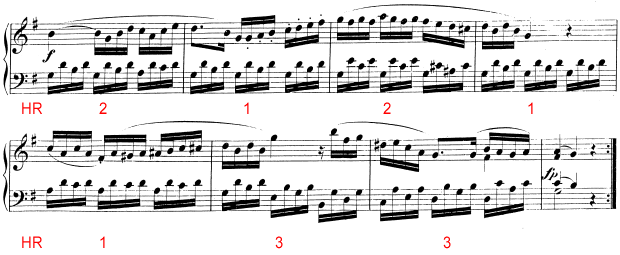Definition
Harmonic rhythm can be defined as the frequency of chord changes. It can be measured in note values, or better -in relation to the meter- as a positive frequency value.
Example: the frequency of chord changes in a 4/4 meter can be the number four, i.e. a chord change on every quarter note, which equals to four chord changes in a bar (measure). If the harmonic rhythm in a 4/4 is the number two, we know that there are two chord changes within a bar (measure).
It is interesting to study the amount of variation of harmonic rhythm within a piece or between pieces. Some examples.
- In the cadence area in Classical-period music the harmonic rhythm will be higher.
- The harmonic rhythm in the work of J.S. Bach is higher than in the work of Vivaldi or Haydn.
- A key stylistic difference between Baroque music and Classical-period music is that the latter exhibits much more variety of harmonic rhythm, even though the harmony itself is less complex.
It is the last point why we mention the concept of harmonic rhythm here (which is of course a universal concept).
|
Example from Mozart's Piano sonata KV 545, movement 2 (beginning)

|
|